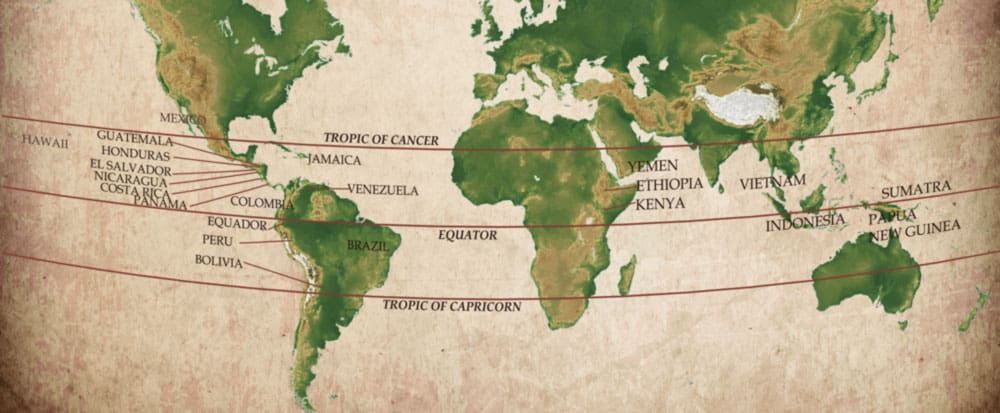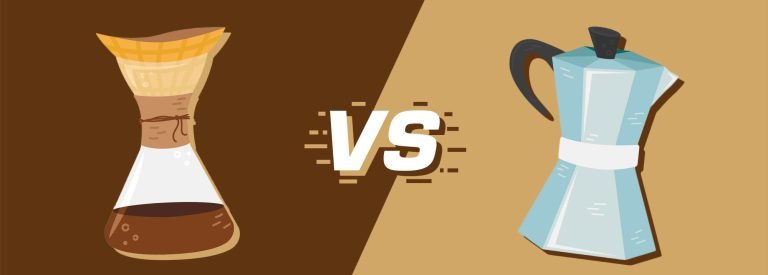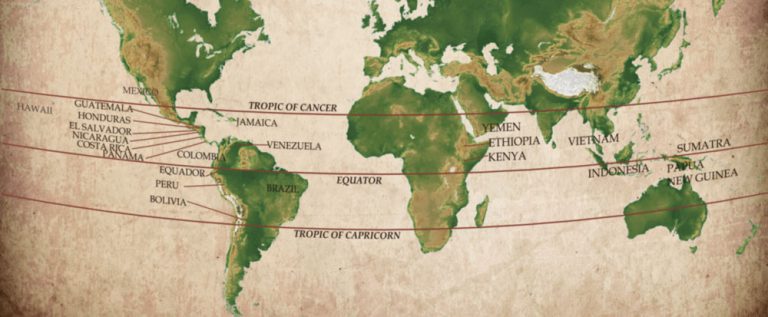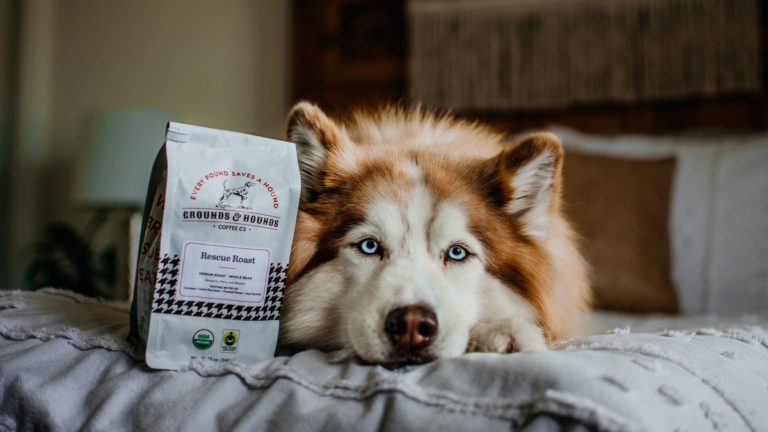These Best Coffee Beans for Chemex Are The Secret Ingredient Behind Amazing Pour Over Coffee
Are you not quite tasting what makes a Chemex cup different? I’m here to let you in on a secret so you can hit your goal for every cup of coffee: you need high-quality beans.
It sounds like a no-brainer, but lots of people don’t put enough emphasis on choosing the right beans.
I’ll walk you through my top 5 bean recommendations that are perfect for Chemex. I’ll also cover different roasts, origins, grinding levels, and some tips to pull off a delicious Chemex brew.
Let’s dive right into the world of the best coffee beans for Chemex.
Best Coffee Beans for Chemex in 2025
These are my top bean picks for brewing with a Chemex in 2025.
| Coffee Bean | Flavor Profile | Processing | Roast Level | Price Range | |
|---|---|---|---|---|---|
| 1. | Ethiopian Yirgacheffe Coffee (Editor’s Choice) | Fruitiness, sweetness, acidity, blueberry tones, floral, and tea-like flavors. | Washed | Medium-light | $$ |
| 2. | Single Origin Colombian | Coffee, caramel, cinnamon, and dark chocolate. Silky smooth body. | Washed | Medium-light | $$ |
| 3. | Brazil Coffee | Chocolate, honey, almond, and dried fruits. Well-balanced acidity. | Washed | Medium | $$ |
| 4. | Single Origin Mexican Chiapas | Blueberry, vanilla, red velvet, and cane sugar. Subtle hints of floral notes, caramel, and toasted nut. | Washed | Light | $$ |
| 5. | Private Reserve Medium Roast Whole Bean 100% Ka’u Coffee | Caramel, cinnamon, brown sugar, and currant. Spicy finish, aromas of citrus and jasmine. Syrupy mouthfeel. | – | Medium | $$$ |
1. Ethiopian Yirgacheffe Coffee – Editor’s Choice
In all my years trying out all kinds of amazing coffee, nothing compares to the downright puzzling and wonderful taste explosion I experienced from Yirgacheffe.
When brewed just right, you’re in for a whole new world of flavors – fruitiness, sweetness, acidity, and funk – all in one. Sure such a jarring experience might not be for everyone, but if you’re someone who wants to try something altogether new from the usual “coffee taste,” this one won’t disappoint.
I still remember the first cup of Yirgacheffe I had. Its natural sweetness and roasted flavors really brought out the blueberry tones; it was almost like biting into freshly picked berries.
It’s important to note that two coffee processing methods are used when producing Yirgacheffe: washed and natural. The washed process typically yields floral and tea-like flavors, while the natural process brings out the blueberry and fruit notes more prominently.
2. Single Origin Colombian
Another coffee variety I particularly enjoyed for Chemex brewing was the flavorful single-origin coffee from Colombia.
Its silky smooth body makes it easy for the palate to prime you for its rich notes dominated by caramel, cinnamon, and complemented by dark chocolate complementing. It was well-balanced and beautifully structured.
Being both fragrant and full-bodied without overwhelming your tastebuds, this coffee bean is the perfect choice if you’re looking for something on the sweeter side yet balanced with an undertone reminiscent of cinnamon or cocoa.
3. Brazil Coffee
Another type that I’ve come to appreciate is the Brazilian Estate coffee from the Minas Gerais region. This high-quality bean offers a well-balanced acidity with notes of chocolate, honey, almond, and dried fruits for an overall clean and pleasantly sweet flavor profile.
While everyone’s taste perception varies to a degree, I think this bean is very similar in flavor to Bolivia Peaberry with its distinct chocolatey notes.
Another thing to note is that Brazilian coffee tends to come from lower altitudes which develop the nutty and chocolatey profiles more prominently than fruitiness. This makes it the perfect choice for traditionalists looking for those rich and robust flavors typical with good-quality Java.
4. Single Origin Mexican Chiapas
If you haven’t tried Mexican coffee yet, a Single Origin Chiapas will surprise you. With my first cup, I couldn’t believe how smooth and rich it tasted. There were no hints of bitterness at all.
While the notes listed were blueberry, vanilla, red velvet, and cane sugar, the blueberry was very strong. It almost felt like I was drinking freshly squeezed juice. But despite that, I could still distinguish subtle hints of floral notes, caramel, and toasted nut, which only gave the brew an extra layer of complexity.
As someone who likes drinking black coffee, this light roast amazed me with its perfect balance between structure and aroma. Captivating smell and refreshing taste.
5. Private Reserve 100% Ka’u Coffee
Now on to my final pick; this one is a bit personal. From my first sip of Ka’u coffee, a wave of nostalgia hit me as it brought back memories of when I was younger and had my very first island coffee.
It’s not just any ordinary cup, though. This one was rich, full-bodied with low acidity, and its syrupy mouthfeel lingered pleasantly.
The notes of caramel and cinnamon were prevalent. Along with hints of brown sugar and currant, a spicy finish, and aromas of citrus and jasmine, every sip was all the more satisfying.
If you prefer something more robust and intense, you might want to try a darker roast of Ka’u coffee beans. They have more of the spicy notes found in the medium-roast variety mixed in with flavors of one and price which is surprisingly refreshing.
How to Choose the Best Coffee Beans for Chemex
Here are the factors that make or break coffee beans suitable for brewing with the Chemex.
Optimal roast level
The roast level of your beans can significantly impact the taste and aroma of your Chemex coffee. There are three levels of roasted coffee: light, medium, and dark.
- Light roasts typically offer more delicate flavors with higher acidity and brighter notes, such as floral or fruity tones.
- Medium roasts provide an excellent balance between flavor and body, where nutty and chocolatey tastes are more prevalent.
- Dark roasted beans deliver deeper, smoky flavors with robust tastes like caramel or even hints of charred wood.
When it comes to brewing with a Chemex coffee maker, I believe the ideal profile is medium-roast beans because they strike a perfect balance between strength and smoothness. At the same time, you don’t lose all the subtle flavors present in high-quality beans.
Darker roasts can easily overpower the subtleties of gourmet coffee, and instead of highlighting the bold, savory notes, you’re more likely to end up with something too bitter.
A general rule of thumb is to opt for lighter roasts for fruity coffee (think Ethiopian) or heavier-bodied ones like Brazil, Colombia, and Mexico for mild-medium acidity levels that retain intricate bean profiles.
Barista tip: The freshness of ground coffee deteriorates quickly due to oxidation, so always use freshly roasted (roast date not longer than 1 month) and ground coffee.
Optimal grind level
The grind size of your beans is also important in Chemex brewing. Too fine, and you’ll end up with a bitter, over-extracted cup. Or you may just plug up the Chemex.

On the other hand, if it’s too coarse, you get weak and acidic coffee because of under-extraction.
The optimal coffee grind for Chemex should be medium-coarse. So how can you tell? Rubbing the grounds between your fingers should feel like rough sand with no large chunks mixed in. This size ensures an even extraction throughout the brewing process.
But how do we achieve this perfect grind? Investing in a good quality burr grinder is one way. Unlike a blade grinder that produces uneven-sized particles by chopping the beans into small pieces, a burr grinder crushes them consistently.
However, if you’re not ready to invest money in buying your expensive grinder just yet, you might try your luck at a specialty cafe where you’re a regular. Baristas can freshly grind your beans, just make sure to store it properly. This option is still better than buying pre-ground coffee from a supermarket.
The role of origin in determining flavor and aroma
These days, you can easily find coffee originating from all over the world. With each region’s unique environmental conditions and soil compositions, you are guaranteed to have all sorts of flavor profiles that the Chemex can really bring out.

Experimenting with different origins also presents new nuanced tasting experiences suited to individual palates providing endless possibilities to create a unique cup of coffee daily.
Here are the origin taste profiles of the top beans above:
- Ethiopia: Known as the birthplace of coffee, you can never go wrong with beans from this region. Ethiopian coffee is known for its bright acidity with fruity notes such as blueberry or strawberry, giving it a unique taste.
- Colombia: Colombian coffee is well-balanced with a rich flavor profile consisting of caramel, chocolate, and nutty undertones. With moderate acidity, they are more palatable if you’re not a fan of the Ethiopian variety’s brightness.
- Brazil: Consider Brazilian coffee if you prefer your cup to have a full body with nutty or caramel-like aromas. It has a lower acidity level compared to the previous regions. To compensate for it, you get subtly sweet tones like caramel and chocolate for lighter brews, and darker roasts will bring out the hints of toasted nuts.
- Mexico: Mexican coffee is often overlooked. It is grown mainly in Chiapas or Oaxaca, which give the beans a distinct flavor profile. Along with a medium body and light acidity, you get notes reminiscent of grapefruit enhanced by soft honey tones and finished off with hints of spice and nutmeg.
- Hawaii: Hawaiian coffee grown on volcanic soil yields a distinctively tropical flavor: mildly acidic with a texture similar to molasses, a floral aroma mixed with macadamia-nut sweetness, and fruity overtones like orange and blackberry. However, they can be more expensive than other origins due to the strict regulations around production and harvesting methods.
These are just my recommendations, and there are still many different origins that produce high-quality beans suitable for brewing exceptional Chemex coffee.
Brewing Tips for Great Chemex Coffee
IMAGE – Barista brewing a cup of coffee with a Chemex
If you haven’t done so yet, please read my guide on how to brew coffee with the Chemex.
But if you’re pressed on time, here are some of the most important tips from the article:
- Water temperature: Ideally, the water should be between 195°F to 205°F (91°C-96°C). This range extracts all the delicious flavors and aromas typical of Chemex brews without risking bitter notes.
- Brew ratio: To ensure you’re adding enough or not too much ground coffee into your brewer, use the recommended ratio for Chemex, which is 1:17, and adjust from there based on your preferences. A tighter ratio will make for a stronger brew, while adding more water will produce a lighter cup. Be careful though, more water might equal longer extraction, which can lead to bitterness. You would also need to coarsen your grinds slightly.
- Pouring technique: When you pour the water into the filter bed, ensure that you evenly saturate the whole surface area. You must also control your pouring rate. The tip that always worked for me was letting the grinds bloom first, then gradually adding more liquid by moving back-and-forth movements in circles or spirals slowly over several minutes.
Frequently Asked Questions
You probably have some questioans about all of this. Here are answers to some you may have, but please ask away in the comments below the article.
Final Thoughts
I can’t stress enough how important it is to choose the right coffee beans for Chemex. After all, they serve as the foundation of your cup and subsequently dictate its flavor profile. Sure, there are other factors involved (grind size, water temp, etc.), but no barista is able to make great coffee from bad beans.
We’ve explored some fantastic options for Chemex-compatible coffee beans. Ethiopia tops my list, followed by Colombia’s balanced notes, Brazil’s subtly sweet hints, Mexico’s gentle fruitiness, and Hawaii’s tropical-rich flavor profile.
Try experimenting with different roasts and origins to find the perfect Chemex brew. Have you got any favorites? Let me know in the comments below.














Sorry if I sound stupid. Love your post. But I’m not smart enough to know ratio. Can you just tell me can you use 2 tbl to 4 cups of water or have I got that wrong. Thank you so much
You can use our coffee ratio calculator to check: https://bigcupofcoffee.com/coffee-to-water-ratio-dose-calculator/
4 cups (1 quart) is a bit less than 1 liter, which would need about 60 g of ground coffee.